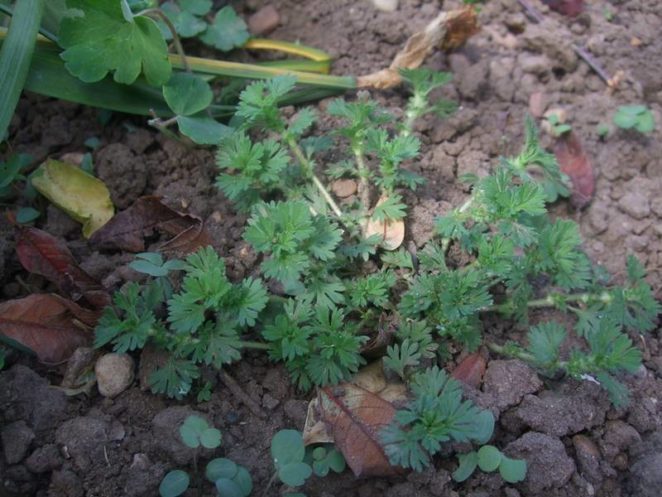Lady’s mantle (Alchemilla vulgaris) grows all over the
British Isles, apart from the Channel Islands.
The plant grows to about 18 inches (45 cms) high, with some stems growing upright while others sprawl along the ground. Each leaf has up to 11 toothed lobes.
Lady’s mantle flowers from June to September, the flowers being unusual in having no petals, only sepals in two rings of four. The hairy fruits ripen in loose clusters.
The plant exhibits an unusual feature called guttation. When humidity is high and water cannot be lost from the leaves as vapour, lady’s mantle forces the water out through its “breathing holes”. This gives the impression of large drops of dew which are not found on neighboring plants.
This phenomenon gave rise in medieval times to the notion that this “dew” was “celestial water” that had magical properties. Alchemists would collect it at dawn in the hope of using it in their experiments aimed at turning base metals into gold. One wonders why they kept on trying, given that every experiment must have been a dismal failure!
This usage is the reason behind the botanical name of the plant.
The name “lady’s mantle” has a different origin, in that it is supposedly dedicated to the Virgin Mary. That has led to the plant being used to treat women’s ailments. One notable past use was to help middle-aged women to restore their breasts to the shape and pertness they once had. Did this work? Presumably enough people must have thought so, otherwise the usage would surely not have entered folklore as it clearly did.
© John Welford
The plant grows to about 18 inches (45 cms) high, with some stems growing upright while others sprawl along the ground. Each leaf has up to 11 toothed lobes.
Lady’s mantle flowers from June to September, the flowers being unusual in having no petals, only sepals in two rings of four. The hairy fruits ripen in loose clusters.
The plant exhibits an unusual feature called guttation. When humidity is high and water cannot be lost from the leaves as vapour, lady’s mantle forces the water out through its “breathing holes”. This gives the impression of large drops of dew which are not found on neighboring plants.
This phenomenon gave rise in medieval times to the notion that this “dew” was “celestial water” that had magical properties. Alchemists would collect it at dawn in the hope of using it in their experiments aimed at turning base metals into gold. One wonders why they kept on trying, given that every experiment must have been a dismal failure!
This usage is the reason behind the botanical name of the plant.
The name “lady’s mantle” has a different origin, in that it is supposedly dedicated to the Virgin Mary. That has led to the plant being used to treat women’s ailments. One notable past use was to help middle-aged women to restore their breasts to the shape and pertness they once had. Did this work? Presumably enough people must have thought so, otherwise the usage would surely not have entered folklore as it clearly did.
© John Welford




